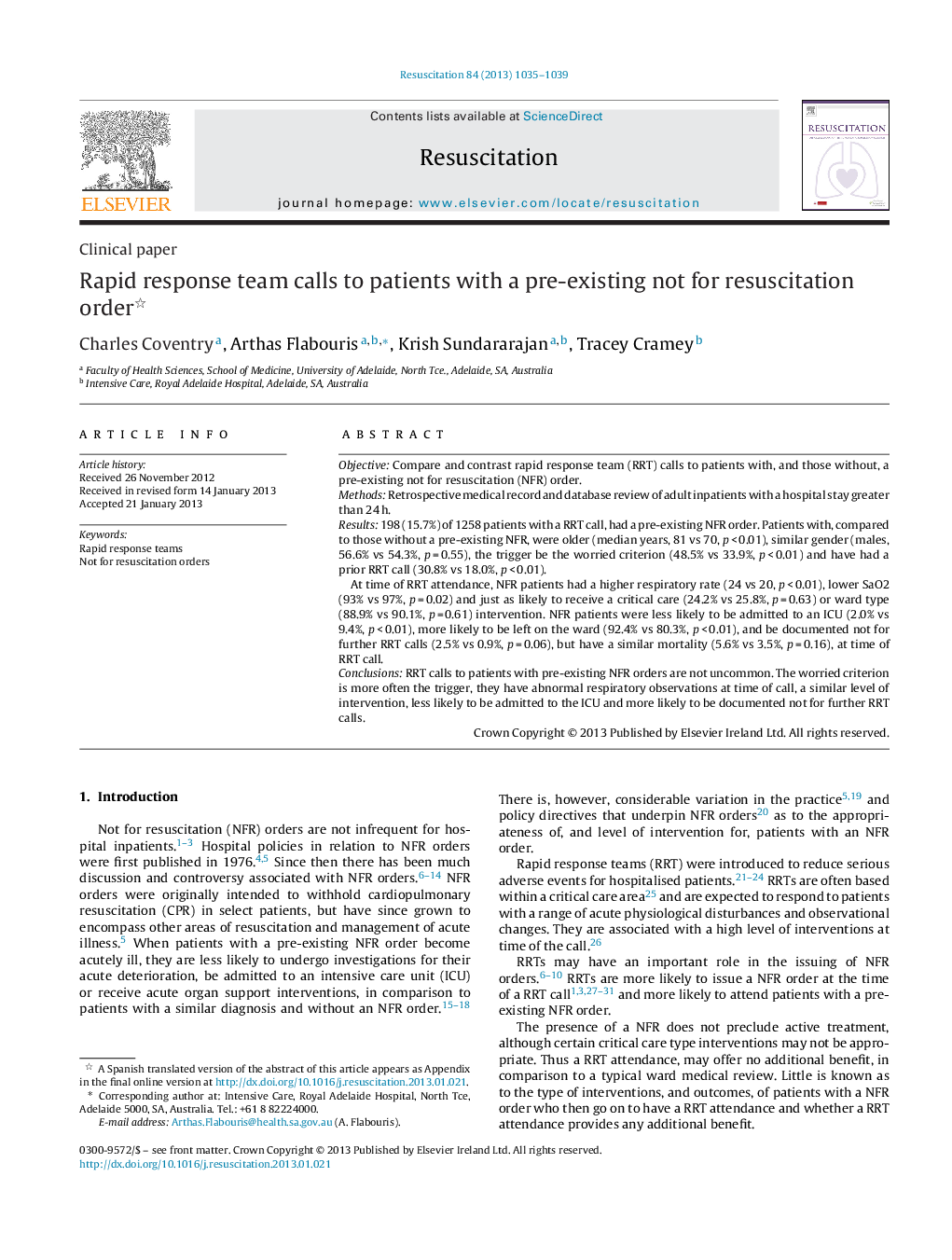| Article ID | Journal | Published Year | Pages | File Type |
|---|---|---|---|---|
| 3008242 | Resuscitation | 2013 | 5 Pages |
ObjectiveCompare and contrast rapid response team (RRT) calls to patients with, and those without, a pre-existing not for resuscitation (NFR) order.MethodsRetrospective medical record and database review of adult inpatients with a hospital stay greater than 24 h.Results198 (15.7%) of 1258 patients with a RRT call, had a pre-existing NFR order. Patients with, compared to those without a pre-existing NFR, were older (median years, 81 vs 70, p < 0.01), similar gender (males, 56.6% vs 54.3%, p = 0.55), the trigger be the worried criterion (48.5% vs 33.9%, p < 0.01) and have had a prior RRT call (30.8% vs 18.0%, p < 0.01).At time of RRT attendance, NFR patients had a higher respiratory rate (24 vs 20, p < 0.01), lower SaO2 (93% vs 97%, p = 0.02) and just as likely to receive a critical care (24.2% vs 25.8%, p = 0.63) or ward type (88.9% vs 90.1%, p = 0.61) intervention. NFR patients were less likely to be admitted to an ICU (2.0% vs 9.4%, p < 0.01), more likely to be left on the ward (92.4% vs 80.3%, p < 0.01), and be documented not for further RRT calls (2.5% vs 0.9%, p = 0.06), but have a similar mortality (5.6% vs 3.5%, p = 0.16), at time of RRT call.ConclusionsRRT calls to patients with pre-existing NFR orders are not uncommon. The worried criterion is more often the trigger, they have abnormal respiratory observations at time of call, a similar level of intervention, less likely to be admitted to the ICU and more likely to be documented not for further RRT calls.
